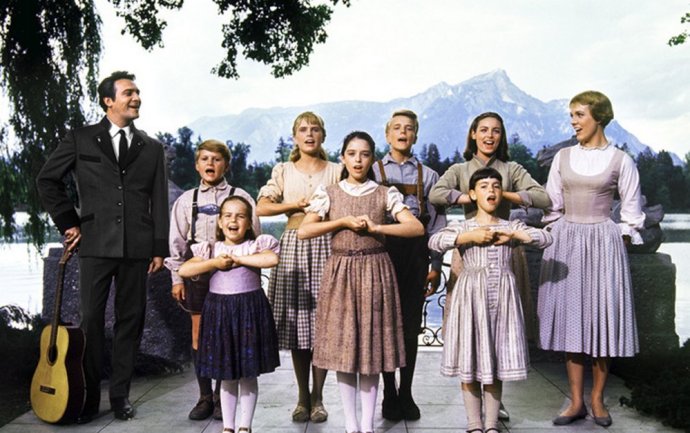
Summer is the classic time to kick back with a good popcorn flick, which is what many locals have been doing these past few weeks with “Wolf Warrior 2,” a mindless, gun-filled action drama that became the country’s highest grossing film this week. But anyone looking for equally mindless eye candy featuring the latest Korean heartthrobs might be disappointed to find such idols have quietly disappeared from Chinese theaters these last few months.
That absence is no accident, though perhaps many Chinese would feel uncomfortable seeing such movies anyhow. Any expats living here will know the tensions are the direct result of South Korea’s decision this year to deploy an anti-missile defense system that Beijing opposes. But regardless, the result has been the emergence of a “soft” campaign against Korean products, from cars to convenience stores and cruises, with Korean pop culture also taking a hit.
The Indians could be next, following a recent standoff between China and its Himalayan neighbor over a territorial issue. Word of that latest looming “soft ban” comes from one of my industry sources, who spoke to me on the subject of this week’s column: namely, the ins-and-outs of importing films and TV shows into the world’s second-largest movie market.
This particular subject is one that often draws attention due to the relative opacity in the review process for any film or TV shows entering China. But the bottom line is that the process is relatively straightforward, and follows a set of rules that are surprisingly predictable and even commercially driven, with an aim of balancing the broader industry’s healthy development while also nurturing local productions.
That’s far different from the China of the past, when importing films and TV shows was quite restrictive. In the beginning, there was a certain element of patriotism and protectionism, though I also suspect that money was a big issue. Foreign currency was a valuable commodity in the China of the 1980s and 1990s, and government leaders were reluctant to spend such a scarce resource on something as frivolous as foreign movies.

My 1980s experience with foreign movies in China consisted mostly of one film, “The Sound of Music.” I don’t know the history behind this particular import, but it seems that someone in China had somehow bought the rights to show this classic U.S. film over and over again, and was taking full advantage of that fact. Many of my Chinese friends could recite the words to most of the movie’s songs by heart, even though most didn’t know what they meant. It’s not hard to see why the film was popular with Beijing, since it was very tame in terms of controversial elements like sex and violence.
Opening the doors
Then in the 1990s, after much pressure from Hollywood, China finally opened the doors a crack by allowing the import of foreign films, starting with a modest quota of just 10 per year that were eligible for revenue sharing based on their box-office performance. Before that, most film sellers pretty much ignored the market since the only way to enter was by selling movies to local distributors for fixed one-time fees that were ridiculously low.
Much has changed in the last two decades, and China now allows 34 films into the country each year on a revenue-sharing basis, and a similar amount can be imported for one-time fees. Those fees used to be relatively modest, as low as $350,000 as recently as 2008. But lately the amounts have skyrocketed to as much as $3 million, fueled by a recent explosion that has made China the world’s second-largest box office, with 45.7 billion yuan ($6.8 billion) in ticket sales last year.
China’s history as the land of big bureaucracy, coupled with cultural sensitivities, have led many to believe the import process for movies and TV shows is quite arcane and convoluted. But it’s actually relatively simple, involving a content screening by the State Administration of Press, Publication, Radio, Film and Television (SAPPRFT), followed by assignment of a release date from China Film Co-Production Corp., which handles the national calendar.
For revenue-sharing films, China Film Co-Production’s parent, China Film Group Corp., also gets involved due to the need for someone to collect and distribute money following a film’s release. The whole process takes about six to 12 weeks, which doesn’t seem hugely long. One amusing detail that harkens back to the old days involves the format for submissions. It seems the folks at SARPPFT require all films be submitted in videocassette form, providing a small boon for the largely defunct VHS and Betamax formats.
As one might suspect, the trickiest part is the approval process, which functions mostly by well-understood rules, like no storylines involving puppy love, and nothing on the usual stable of politically sensitive subjects. But then there are also ad hoc things like the South Korean tensions, which are impossible to predict but could throw a huge wrench into a film importer’s plans.
To avoid that kind of situation, it’s always good to have well-connected local partners who know which way the wind is blowing and can pick up the phone and get feedback when, for example, a film might be running into difficulties or a new soft ban may be on the horizon. At the end of the day, China wants its movie industry to succeed, and thus realizes a certain amount of higher-quality foreign material is necessary to keep people coming back for more, my source said. That bodes well for importers, who are finding an increasingly lucrative place inside the China box office.
— This article originally appeared on Caixin Global.







